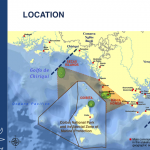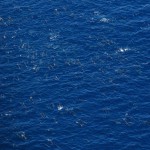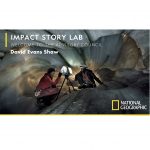
- 08
- 03
- 2012
- Category:
- Exploration & Discovery
- ,
- Service & Advocacy
David Shaw joins Mission to Enhance the Value of Panama’s Coiba National Park
In March 2012 I joined a mission to the west coast of Panama aimed at exploring concepts to enhance the economic, scientific and ecological value of the country’s Coiba National Park and world heritage area.
The park and associated marine reserve covers approximately 430,000 acres in Panama’s Gulf of Chiriqui. Because of it’s isolation and government travel restrictions, the area has flourished with only limited human contact.
Transects of Hannibal Bank revealed a significantly depleted ecosystem. Experts suggested that this is due in part to overfishing including poaching where enforcement of regulations has failed. At a session hosted by nearby island-owner Jean Pigozzi, we met with Minister Rubén Berrocal, head of Panama’s Secretariat of Science and Technology (SENACYT) to discuss the ways that greater investment and protection could enhance the region’s prospects and protect Panama’s “blue assets.” Initiatives discussed included:
- SENACYT initiative to establish a major laboratory in Coiba National Park; SENACYT and STRI, both members of the Consejo Ejecutivo (CE) for the Park, should investigate means to best align the aims of the new facility with Park management.
- Explore the concept of a “Blue Halo” around the Park by extending protection to the limit of Panama’s 200 mile Exclusive Economic Zone, an approach being considered in Bermuda in the Sargasso Sea, and various other island countries that have, like Panama, much more ocean than land and are recognizing their unprecedented new opportunities –and responsibilities.
- Find ways to balance the interests of local fishermen with the importance of having large fully, protected areas, recognizing that many marine species (tunas, marlin, sailfish, sharks, groupers, snappers) and entire ecosystems (mangroves, coral reefs, sea grass meadows) have sharply declined in recent years in Panama and globally. Protected areas enable fish and other organisms to build larger, more diverse populations while restoring depleted areas.
The group discussed bringing together representatives of the local sports fishing community to address recreational fishing in the Park and to review lessons learned in Costa Rica and Guatemala where large fish have been seriously depleted. For fish to thrive, essential habitats for feeding, breeding, nursery and migratory areas must be protected – and respected. While in Coiba, we toured Jean Pigozzi’s Liquid Jungle Lab. We heard about mangrove conservation programs and the collaborative effort that led to designation of Coiba as a UNESCO World Heritage Site in 2005, a gem for future generations. After meetings with Minister Beroccal several of us flew around Coiba to better understand natural features of the area including park boundaries and adjacent landscapes. An historic prison on Isla Coiba played a role in restricting access over many years. It’s a spectacular part of the world.
I enjoyed several lengthy conversations with Hector Guzman, a scientist at STRI who has been mapping whale movements near the Panama Canal and suggesting changes in shipping lanes to avoid often-fatal collisions. It was gratifying to hear that the International Whaling Commission has since commended Hector on his work and adopted changes. This trip also included a visit to Islas Secas, a beautiful chain of islands in the Coibas region. We sailed to Panama City after our work in Coiba and I visited the Smithsonian Tropical Research Institute prior to returning to New York. It was a pleasure to be part of this effort to seek a more secure future for Coiba park and the creatures who live there. Importantly, this was my first significant trip since contracting encephalitis in July 2011. At the advice of my doctors I did not scuba dive in Panama but use of the submersible opened a new world for me at oceans depths previously inaccessible. Click the links below for materials for additional reading: Expedition Coiba -Aug 2014 SENACYT STRI SEA Coiba Hannibal Bank May 2012







































